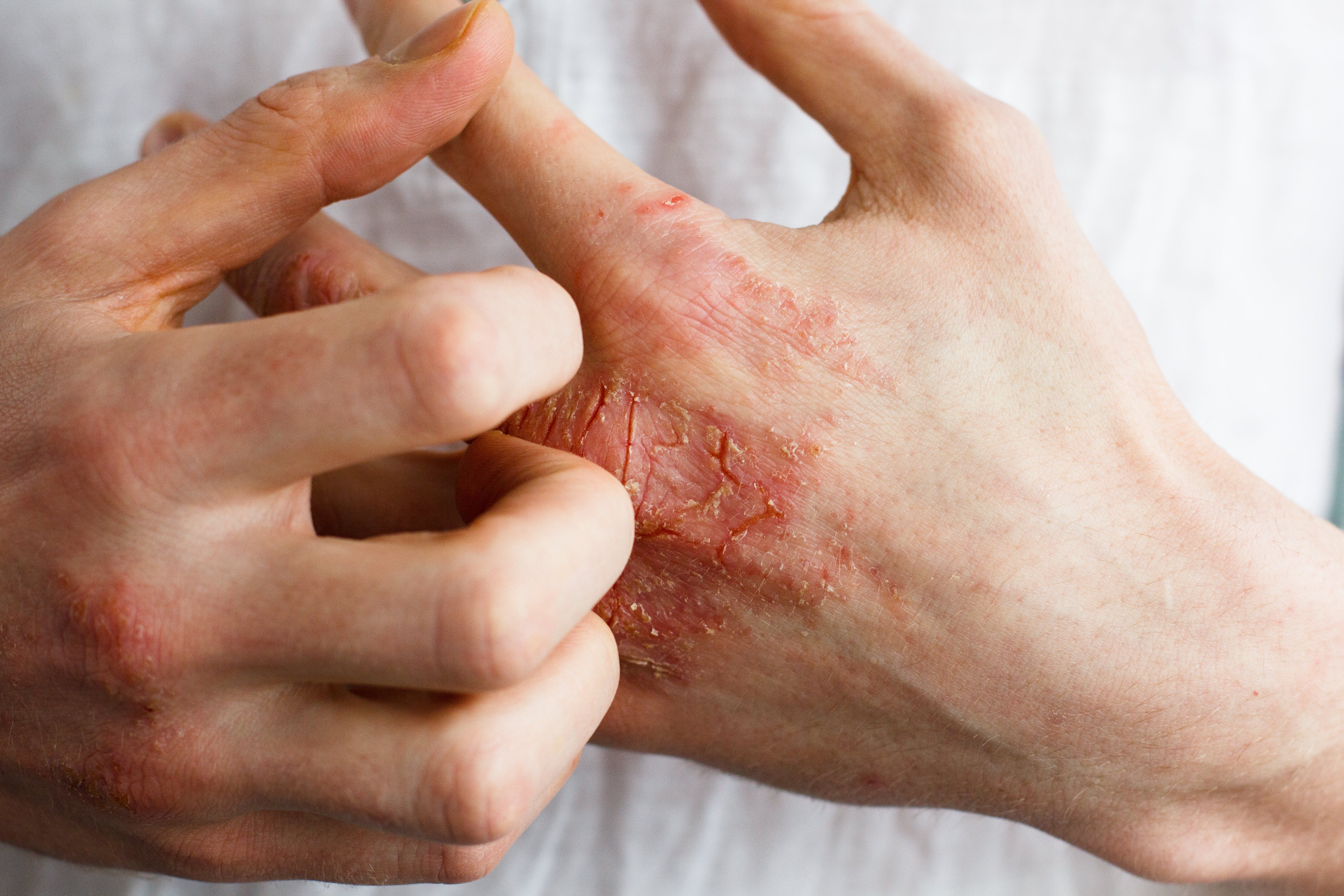- Acne
- Actinic Keratosis
- Aesthetics
- Alopecia
- Atopic Dermatitis
- Buy-and-Bill
- COVID-19
- Case-Based Roundtable
- Chronic Hand Eczema
- Chronic Spontaneous Urticaria
- Drug Watch
- Eczema
- General Dermatology
- Hidradenitis Suppurativa
- Melasma
- NP and PA
- Pediatric Dermatology
- Pigmentary Disorders
- Practice Management
- Precision Medicine and Biologics
- Prurigo Nodularis
- Psoriasis
- Psoriatic Arthritis
- Rare Disease
- Rosacea
- Skin Cancer
- Vitiligo
- Wound Care
Article
YouTube videos on eczema often misleading, potentially dangerous
Author(s):
A third of the most viewed eczema videos on YouTube give misleading and potentially harmful information, says a recent study.
A third of the most viewed eczema videos on YouTube give misleading and potentially harmful information, says a recent study. (Ольга Тернавская - stock.adobe.com)

A third of the most watched YouTube videos providing information on atopic dermatitis give misleading information which could be potentially harmful to patients who watch them, show the results of a study presented at the British Association of Dermatologists Annual Meeting 2019 in Liverpool on 3 July.
YouTube hosts thousands of videos on atopic dermatitis, so researchers decided to assess the accuracy and quality of the information provided by them by analysing the 100 most viewed eczema-related videos on the site, which had been viewed a combined total of 8,527,624 times and had a combined duration of seven hours and 52 minutes.
RELATED: Desire for clearance high in atopic dermatitis patients
The medical quality of the videos was assessed using the Global Quality Scale (GQS) and the DISCERN instrument. The DISCERN instrument measures a video’s quality of information about treatment. Originally developed to assess written medical information, it consists of 15 questions scored 1-5 which evaluate reliability, quality of information and overall quality of a publication. The GQS is based on a 5-point scale and was devised for the evaluation of YouTube videos; it measures the quality and flow of information and the value of information for medical lay people. For both tools, the higher the accomplished value, the higher the quality of the video clip enabling the videos to be classified into ‘useful’, ‘misleading’ and ‘potentially harmful’.
The results revealed that 46% of the videos were misleading, and that 36% were disseminating content potentially dangerous to eczema patients. For example, patients with eczema were not only encouraged to pursue unnecessary diets such as avoidance of dairy or gluten, but also to use harmful topical treatments and home-based phototherapies without any detailed information about the duration of the application and potential risks. Furthermore, conventional medicine and physician’s advice were discredited in various ways, while promising a “fast and easy cure”. The two assessment tools, GQS and DISCERN, highlighted that around two thirds of the videos were of poor or very poor scientific quality.
RELATED: Video: Differing definitions of atopic dermatitis
For each video the number of viewers’ ‘likes’ was then correlated with the scores of the GQS and DISCERN. Viewers’ ratings did not correlate with the results of the GQS and DISCERN analysis indicating that the viewers were not able to recognise good and poor quality of the videos.
Healthcare institutions and universities accounted for just 21% and 8% of the videos, respectively, while private individuals and promotors of complementary and alternative treatments had posted half (50%) of the videos analysed.
Dr. Simon Mueller of University Hospital Basel, Switzerland, said, “Our in-depth study demonstrates that two-thirds of the AD-related videos we analysed were of very poor scientific quality, and many were found to be disseminating misleading or even dangerous content.”
A previous study by the same group of researchers found that a similar proportion of the most watched YouTube videos about psoriasis were disseminating misleading (52%) or even dangerous (11%) information.
“Social media is a continually growing source of medical information for patients, particularly for young people. This information often doesn’t undergo review for scientific accuracy or quality and as our research shows, it has the potential to be heavily biased or even harmful,” Dr. Mueller said.
READ MORE: Atopic dermatitis stories
“We hope that our research will make people think twice about the medical information they get from social media. The internet is a powerful and often helpful research tool, but where you source your information from is important. We do not advise against this kind of lay research, but we clearly advise against decision making based on YouTube videos only. We rather encourage to discuss the content of the videos with a doctor of trust to avoid adverse outcomes.”
He added, “Strategies by professional dermatological organizations are urgently needed to improve their presence and visibility on YouTube.”
Newsletter
Like what you’re reading? Subscribe to Dermatology Times for weekly updates on therapies, innovations, and real-world practice tips.











